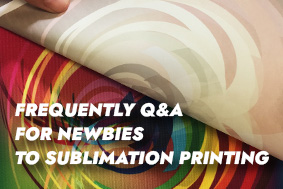The negative effects of the great leap in industrial production in the last 50 years on the environment and natural resources have been getting more evident each day. 83% of freshwater species populations and a third of wetlands have disappeared since 1970 and nearly two billion people today live in areas at risk of severe water scarcity. The textile industry, which is responsible for 20 percent of the world’s water pollution and consumes high amounts of clean water in dyeing and traditional printing processes, also plays a critical role in creating a sustainable world. According to research, enough water (93 billion m³) to meet the consumption needs of 5 billion people is used for textile/apparel production every year.
While the value of print services was 3.16 billion Euros in 2020, it increased to 3.82 billion Euros in 2021, and the figures that decreased in 2020 with the effect of the pandemic which changed the balances all over the world are expected to increase until 2022. The volume of inkjet printed fabrics is estimated to increase about 2 times its size from 2.89 billion square meters in this period to 5.53 billion square meters in 2026 according to the estimates, and the data shows that the share of inkjet printing in the total printed textile market has increased from 6% to 10%. This growth presents an important opportunity for textile printing suppliers to grow and recover their losses after the pandemic.

Digital Textile Printing Saves 600 Percent Water
According to the global printing federation FESPA, digital textile printing technologies are making the fashion world greener. While the textile printing industry is transforming with the rapid developments in the fashion industry, over 30 billion square meters of textile printing is made annually in the textile market of 165 billion dollars worldwide. As the world population continues to increase, the printing industry is expected to grow, and with this growth, sustainable technologies have started to gain importance. The textile printing industry is working for a greener future with digital textile printing technologies. Digital textile printing machines can save up to 600 percent water.
Uses 6x Less Ink
Large amounts of water and ink are used in rotary screen printing on textiles. While rotary screen printing consumes 35-60cc of ink per meter, digital textile printing, which uses Piezoelectric printheads that spray micro ink droplets onto the surface of the fabric, uses 6 to 9cc of ink per meter.
In simple terms, this means that a 10,000-meter print run on a rotary head printer would use more than 540 kilos of ink as opposed to the 90 kilos used by the digital printer. Since the main component in aqueous ink dispersions is water, this means 600 percent water savings with digital textile printing machines.

Subtextile Co. Ltd.
Address:699-18 Xuanwu Avenue, Nanjing City, China, 210000
Tel |Fax:+86 25 85416407 (GLOBAL)
Cell:+86 17798509616
Whatsapp:0086 17798509616
E-mail:[email protected]
 Easy-to-Design Mother's Day Gift Ideas
Easy-to-Design Mother's Day Gift Ideas
 Frequently Q&A for Newbies to Sublimation Printing
Frequently Q&A for Newbies to Sublimation Printing
 Choose sublimation paper? Focus on quality over price
Choose sublimation paper? Focus on quality over price
 7 Factors To Consider Before Choosing A Digital Textile Printer
7 Factors To Consider Before Choosing A Digital Textile Printer